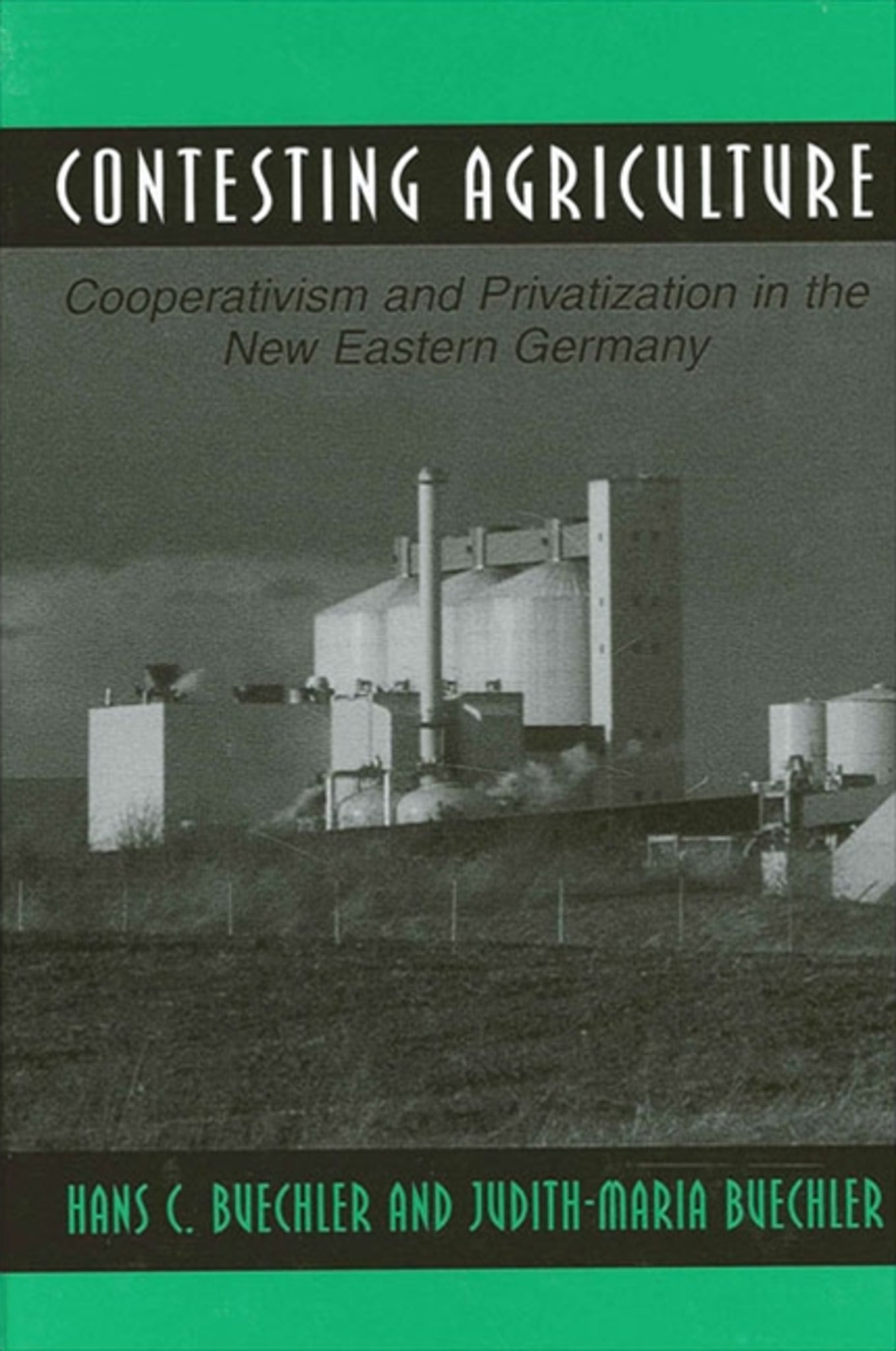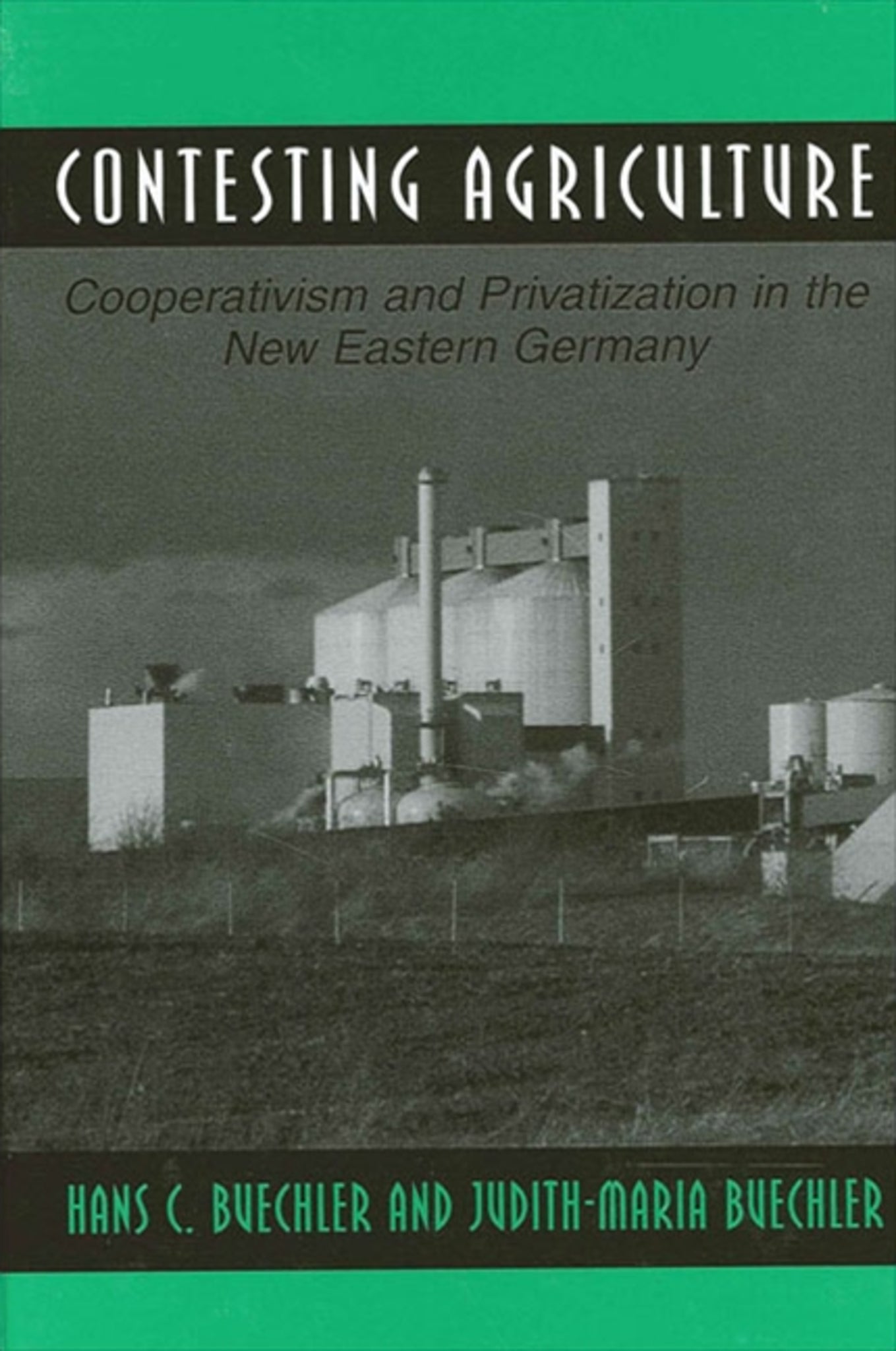We're sorry. An error has occurred
Please cancel or retry.
Contesting Agriculture

Some error occured while loading the Quick View. Please close the Quick View and try reloading the page.
Couldn't load pickup availability
- Format:
-
07 March 2002

Examines the privatization of agriculture in eastern Germany since 1989.
This analysis of the privatization of agriculture in eastern Germany captures the turbulent times after the fall of the Berlin Wall in 1989 and the subsequent reunification of the two Germanies. Based in large part on oral histories provided by cooperative managers, newly independent family farmers, and westerners who established farms in the east, the authors examine the competitive struggle involved in the transformation from communism to capitalism. Linking the personal to the local, regional, national, and global, they develop a theory of the construction of identities out of past experiences and new challenges, in order to account for the ambiguities and contradictions inherent in the core relations and ideas that constitute the new Germany.


"We get to meet people, and we learn about the dilemmas they face in their lives, as well as their view of the crisis period they went through in the initial years of the change. This is a remarkably sympathetic book in the best sense of the term. The authors are greatly at ease in the region. They are native speakers, and one of them comes from a family in the area. As a result, one gains wonderful bonus insights into life in the area and into rural East German culture." — Gavin Smith, University of Toronto
"The book is resoundingly empirical. The authors have interviewed thirty subjects, or 'consultants,' in their study area, and have allowed them to inform the scholarship. Their voices resonate throughout, their experiences shout from the pages, and their data are there in voluminous quantity." — Alexander Moore, University of Southern California
List of Illustrations
Acknowledgments
List of Abbreviations
Chronology
1. Introduction
The Setting
Methodology
2. Identities
PART I: THE COMMUNIST PERIOD
3. The History of Collectivization in Agriculture
4. The LPG
Introduction
The Mass Production Model in Agriculture
The Dynamics of Planning: Rationales and Irrationalities
Production Quotas and Export
The Organization of Agricultural Tasks
Local Responses
Inconsistencies in the Distribution of Farm Equipment
Showcase Projects
Communal Tasks
Capital Investments and Debt
Compensation
Supplementing Wages: Individual Production by LPG Members
The Family as Source of Identification
Leisure
The LPG Administration
Farm Manager Identities
PART II. THE POST-COMMUNIST PERIOD
Introduction: The Aftermath of Reunification
The Crash in the Markets: Panic Purchases
New Markets and Pricing Structures
Government Supports and Useless Feasibility Plans
The Maze of Legal Forms of Ownership
Rights to Compensation and to Decide on the Future of the Cooperatives
5. The Cooperative Solution
Legal Options
The Cooperative Managers' Opinion of West German-Style Cooperativism
The Transition to West German-Style Cooperatives: Process and Timing
The New Leadership
Carrying Out Compensation
Impediments: Access to Land
Leasing from Individuals
The Issue of Buildings
Set-Aside Programs
The Carryover of Debt Incurred During the GDR
A Case of Failure
Prospects
6. The New Cooperatives: Continuity and Change
Restructuring Activities
Investment in Buildings and Machinery
Crop Production
Livestock Production
Markets
Reducing the Workforce
Wage Levels and Working Conditions
The Cooperatives' Relationship to Communities
Prospects
7. The Eastern Independent Farmers
Obtaining Land
Machinery
Investment
Division of Labor and the Employment of Outside Labor
Crop Production and Its Link to Market Demand
Livestock Production
Prospects
Conclusion
8. The Western Farmers
Adapting to Life in the East
Access to Land
Investment
Personnel and Division of Labor
Crop Production and Marketing
Livestock Production and Marketing
Suppliers and Markets
Community Relations
9. The Service/Industrial Context of Agriculture: Linkages and Permutations
Suppliers
A Serviceman
Clients
The Nature of Economic Networks
Convergences and Divergences between Farmers and Their Associates
10. Conclusion
Notes
Glossary
Bibliography
Index



